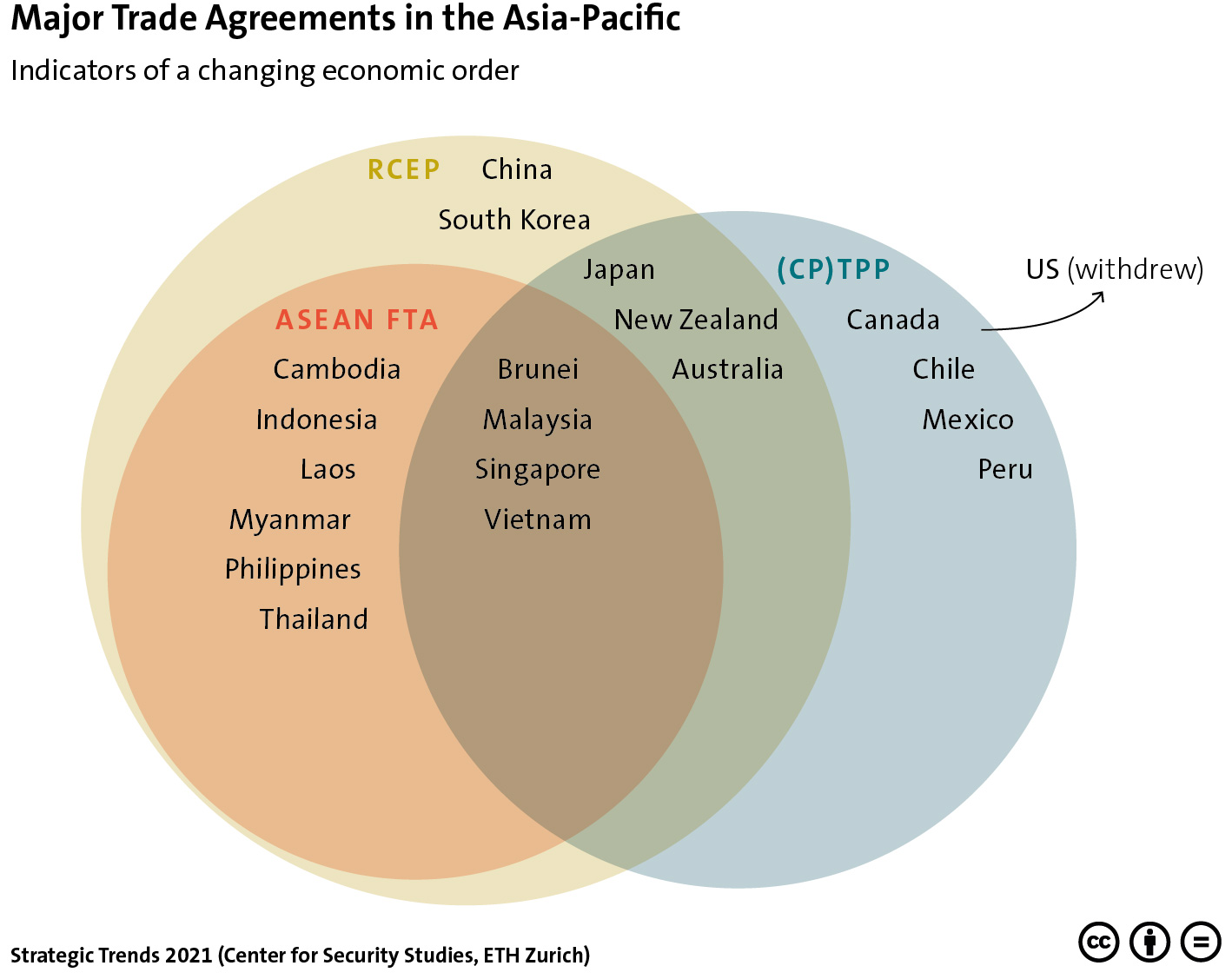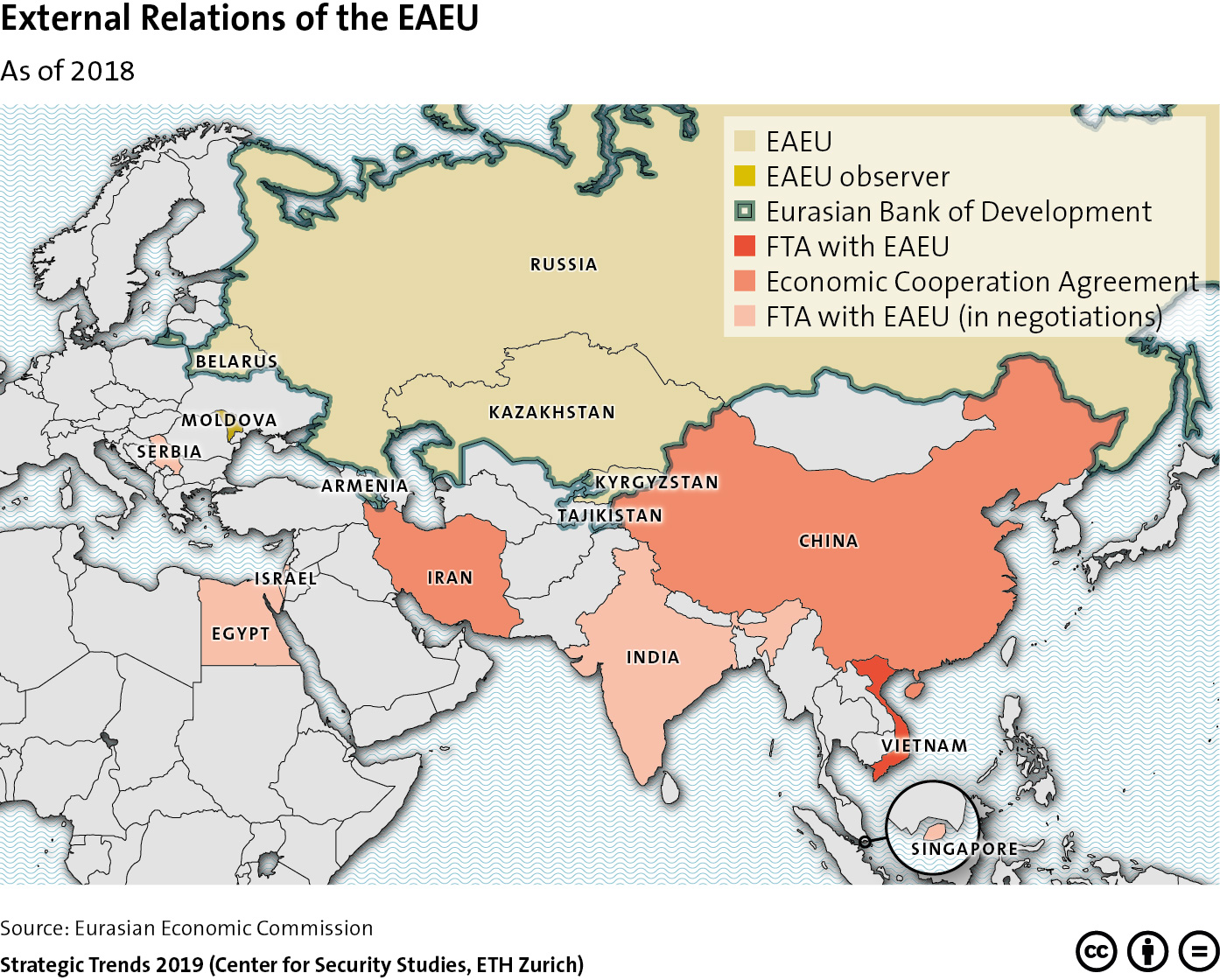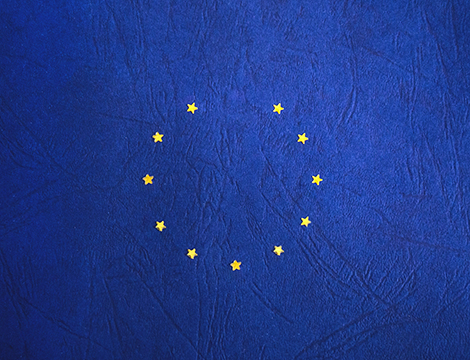
This week’s featured graphic illustrates major trade agreements in the Asia-Pacific. To find out more on Japanese and South Korean perspectives on changing power configurations in Asia, read Linda Maduz’ Strategic Trends 2021 chapter here.

This week’s featured graphic illustrates major trade agreements in the Asia-Pacific. To find out more on Japanese and South Korean perspectives on changing power configurations in Asia, read Linda Maduz’ Strategic Trends 2021 chapter here.

This week’s graphic maps the external relations of the Eurasian Economic Union (EAEU). This includes states that have an observer status in the organization, who are members of the Eurasian Bank of Development, have a free trade agreement (FTA) with the EAEU, and more. For an analysis of the EAEU’s role in Russia’s Eurasian strategy, read Jeronim Perović’s chapter for Strategic Trends 2019 here.

This article was originally published by the European Council on Foreign Relations (ECFR) on 14 July 2017.
For the EU, the EPA would demonstrate its ability to deliver concrete results despite the numerous crises it faces.
Last week the EU and Japan announced an ‘agreement in principle’ after four years of talks on an Economic Partnership Agreement (EPA) between the two economic giants. Yet the reaction to this news has not befitted a mega-trade agreement covering over 30% of world GDP and 40% of global trade. This is partly because news emanating from Washington dominates the headlines, but mostly because there is still a long way to go, with the two parties to the agreement bracing themselves for a set of difficult negotiations to finalize the deal.
The agreement in principle means that the chances of the deal falling through are slim, as long as talks are kept at the same level of political priority that made last week’s announcement possible. If agreed, the deal would mark a historic shift in the quality of economic and political relations between the two partners, with far-reaching consequences for third parties as well.

This article was originally published by the Centre for European Policy Studies (CEPS) on 15 July 2016.
The prospect of Brexit has kicked up a lot of dust around the now famous Article 50 TEU withdrawal procedure, and the form, scope and sequence of the ‘divorce’ and future framework agreements between the EU and the UK.[1] One issue that has received far less attention is whether the international agreements concluded by the EU will continue to apply to the UK after Brexit, and if so, how.
The EU has concluded 1,139 bilateral and multilateral agreements with third parties, ranging from trade, development and sectoral economic issues like aviation, energy and fisheries, to matters related to visa, human rights, and the Common Foreign and Security Policy (CFSP).[2] For those accords that fall squarely within the realm of the EU’s exclusive competences (e.g. classic free trade agreements) there is in principle no discussion: thanks to its single international legal personality, the EU and the third parties are the sole signatories to the agreements and will remain bound by them. A simple notification by the EU to the third parties might thus suffice to inform them that the EU no longer consists of 28 but 27 member states.

Is an “economic NATO” possible? This striking – and perhaps misleading – expression has been used by some commentators to convey a possible outcome of negotiations between the United States and European Union over the creation of a Transatlantic Trade and Investment Partnership (TTIP). The origins of this proposed partnership date back to November 2011, when a joint High Level Working Group (HLWG) on Jobs and Growth began discussing shared priorities. The HLWG delivered its final report in February 2013, and highlighted a range of options for expanding transatlantic trade and investment. Brussels and Washington are expected to give the green light for negotiations shortly, with talks possibly starting before the summer recess.
It remains unlikely that negotiations will result in a “fortress scenario” in which the US and EU mutually protect themselves from rising economic powers. What can be anticipated, however, is that the TTIP will have significant consequences for global economic security, irrespective of its final shape and structure.